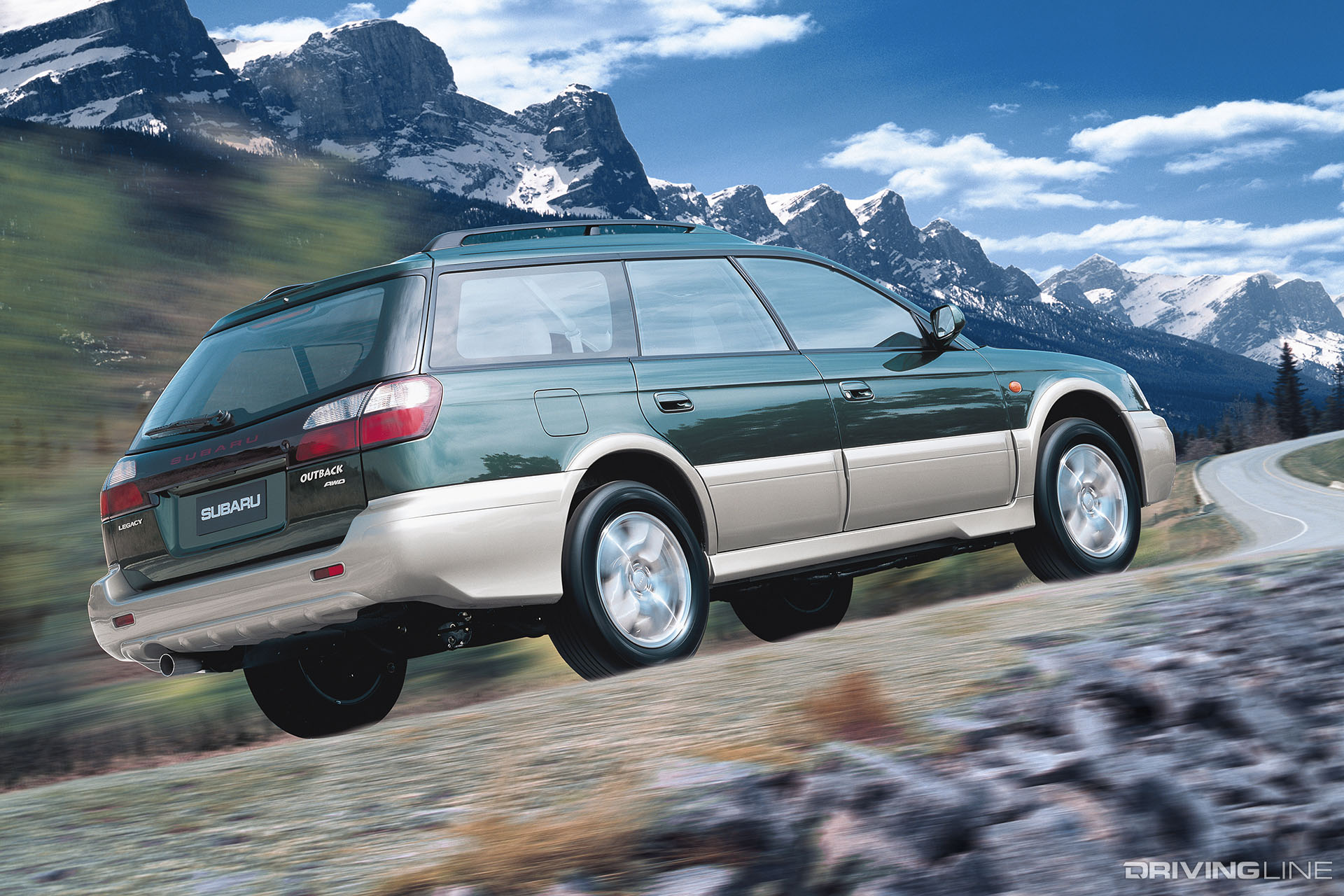Funky? Groundbreaking? Ahead of its time? All of these are terms could be used to describe the Outback, which despite its Aussie-inspired name is one of Japanese brand Subaru's most well known models.

Always a bit unusual, "this not quite an SUV, not quite a station wagon" has come a long way from its origins back in the mid '90s and is a car that's been credited for starting Subaru's success in North America. So how did the Outback come about and how has it evolved in the decades since it first appeared? Let's take a look back.
Far from the puppy-dog loving powerhouse it's become in recent years, Subaru was an extremely niche nameplate in the US market during the early 1990s.

In an era where Japanese imports were defined by cars like the Honda Civic and Toyota Camry, Subaru instead offered small sedans, wagons and hatchbacks that were known for their AWD systems.
Being niche isn't easy though, and with the growth of the American SUV market sparked by vehicles like the Ford Explorer, Subaru's North American division came up with a plan to inject some SUV traits into the existing Subaru lineup.

And thus the Legacy Outback was introduced for the 1995 model year. Based on the second generation Subaru Legacy Wagon. To help diffeentiate it from the regular Legacy, the Outback was given unique coloring and branding - and for the following model year it was made more SUV like with larger tires, improved ground clearance and unique body cladding.
Subaru already had a proven AWD system to give the Outback its off-pavement cred. Now it just needed a marketing push. And that's where Australian actor Paul Hogan came in to star in a series of memorable TV commercials. Sales of the Outback quickly exceeded expectations, as buyers were drawn to its blend of SUV styling and off-road capability with its car-like dynamics and improved fuel economy.

Interestingly, for the first two generations of the Outback, Subaru also made a version with the Legacy sedan body style, known as the "Sport Utility Sedan." As you can guess, the concept never really took off and it was one of the only sedans of its type.

Having become a crucial part of Subaru's lineup, the Outback continued on—always based on the Legacy and soon becoming much more popular than the model it was based on.

In recent generations, Subaru actually stopped selling the normal Legacy wagon altogether, with the lifted Outback being the only way to buy a longroof Legacy.

For a few generations, Subaru also sold an Outback version of the smaller Impreza Sport Wagon, with this spot in the lineup being taken over in recent years by the Crosstrek—another smash hit for the brand.

Ironically, as the once ubiquitous American station wagon faded into oblivion in the wake of SUVs and minivans, Subaru repackaged and re-marketed its traditional wagon into a car that radically altered the course of the company and put them on path to becoming the success story they are today.

Like all modern cars, the Subaru Outback has grown larger, heavier and more technologically advanced as its aged, but even in 2020 it still retains that unusual but endearing personality it had back in '95. And it still rides the strange middle ground between station wagon and SUV.

And in era where the "Crossover" has become a dominant segment, a car that splits the difference between station wagon and SUV could be considered a pioneer of the movement - and perhaps one of the most influential cars in automotive history.
And speaking of the Crosstrek, we are still waiting for Subaru to do the right thing and build a WRX version.